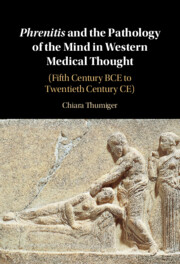86 results
“Sticking together while standing one's own ground”: The meanings of solidarity in humanitarian action
-
- Journal:
- International Review of the Red Cross , First View
- Published online by Cambridge University Press:
- 20 March 2024, pp. 1-32
-
- Article
-
- You have access
- Open access
- HTML
- Export citation
Chapter 1 - EEG Basics
- from Part I - Introduction
-
- Book:
- Critical Care EEG Basics
- Published online:
- 22 February 2024
- Print publication:
- 29 February 2024, pp 1-16
-
- Chapter
- Export citation
8 - Applications of Magnetic Communications Systems
- from Part III - Applications
-
- Book:
- Magnetic Communications
- Published online:
- 04 January 2024
- Print publication:
- 18 January 2024, pp 165-202
-
- Chapter
- Export citation
A CATEGORICAL APPROACH TO THE BAUM–CONNES CONJECTURE FOR ÉTALE GROUPOIDS
- Part of
-
- Journal:
- Journal of the Institute of Mathematics of Jussieu , First View
- Published online by Cambridge University Press:
- 02 January 2024, pp. 1-46
-
- Article
-
- You have access
- Open access
- HTML
- Export citation
Chapter 1 - Preface and Methodological Issues
-
- Book:
- <i>Phrenitis</i> and the Pathology of the Mind in Western Medical Thought
- Published online:
- 16 November 2023
- Print publication:
- 30 November 2023, pp 1-20
-
- Chapter
-
- You have access
- Open access
- HTML
- Export citation
Chapter 4 - Theoretical Aspects of Imperial Nosology
-
- Book:
- <i>Phrenitis</i> and the Pathology of the Mind in Western Medical Thought
- Published online:
- 16 November 2023
- Print publication:
- 30 November 2023, pp 94-128
-
- Chapter
-
- You have access
- Open access
- HTML
- Export citation
Spaces of functions and sections with paracompact domain
- Part of
-
- Journal:
- Proceedings of the Royal Society of Edinburgh. Section A: Mathematics , First View
- Published online by Cambridge University Press:
- 21 November 2023, pp. 1-23
-
- Article
- Export citation

Phrenitis and the Pathology of the Mind in Western Medical Thought
- (Fifth Century BCE to Twentieth Century CE)
-
- Published online:
- 16 November 2023
- Print publication:
- 30 November 2023
-
- Book
-
- You have access
- Open access
- Export citation
From South America to the United States: Guayakí and the Transformation of Yerba Mate
-
- Journal:
- Enterprise & Society , First View
- Published online by Cambridge University Press:
- 10 November 2023, pp. 1-26
-
- Article
-
- You have access
- Open access
- HTML
- Export citation
Chapter 1 - Emergency Neurologic Examination
- from Section 1 - Neurologic Examination and Neurodiagnostic Testing
-
-
- Book:
- Handbook of Emergency Neurology
- Published online:
- 10 January 2024
- Print publication:
- 17 August 2023, pp 1-7
-
- Chapter
- Export citation
CONDITIONAL FLATNESS, FIBERWISE LOCALIZATIONS, AND ADMISSIBLE REFLECTIONS
- Part of
-
- Journal:
- Journal of the Australian Mathematical Society / Volume 116 / Issue 2 / April 2024
- Published online by Cambridge University Press:
- 23 June 2023, pp. 200-220
- Print publication:
- April 2024
-
- Article
-
- You have access
- Open access
- HTML
- Export citation
8 - Ensemble and Hybrid Data Assimilation
- from Part III - Methods and Issues
-
- Book:
- Principles of Data Assimilation
- Published online:
- 22 September 2022
- Print publication:
- 29 September 2022, pp 210-231
-
- Chapter
- Export citation
Chapter 15 - Five Entries on Translation and Loss
-
-
- Book:
- Translation
- Published online:
- 23 September 2022
- Print publication:
- 22 September 2022, pp 251-265
-
- Chapter
- Export citation
Chapter 1 - What Is World Crime Fiction?
-
-
- Book:
- The Cambridge Companion to World Crime Fiction
- Published online:
- 14 April 2022
- Print publication:
- 21 April 2022, pp 1-24
-
- Chapter
- Export citation
Chapter 2 - Centralization and Decentralization of the Self
-
- Book:
- Liberation in the Face of Uncertainty
- Published online:
- 06 January 2022
- Print publication:
- 13 January 2022, pp 34-71
-
- Chapter
- Export citation

News Media Translation
-
- Published online:
- 29 October 2021
- Print publication:
- 11 November 2021
21 - Language Policy and the Arabic Localization of Twitter
- from Part V - Arabic Linguistics and New Media Studies
-
-
- Book:
- The Cambridge Handbook of Arabic Linguistics
- Published online:
- 23 September 2021
- Print publication:
- 30 September 2021, pp 507-531
-
- Chapter
- Export citation
A REPUTATION DEFICIT? THE MYTHS AND REALITY OF CHINESE INVESTMENT IN ZAMBIA
-
- Journal:
- Journal of East Asian Studies / Volume 21 / Issue 2 / July 2021
- Published online by Cambridge University Press:
- 12 November 2021, pp. 259-282
- Print publication:
- July 2021
-
- Article
-
- You have access
- Open access
- HTML
- Export citation
On homotopy nilpotency of loop spaces of Moore spaces
- Part of
-
- Journal:
- Canadian Mathematical Bulletin / Volume 65 / Issue 2 / June 2022
- Published online by Cambridge University Press:
- 11 May 2021, pp. 296-307
- Print publication:
- June 2022
-
- Article
-
- You have access
- Open access
- HTML
- Export citation
Deformation of Dirac operators along orbits and quantization of noncompact Hamiltonian torus manifolds
- Part of
-
- Journal:
- Canadian Journal of Mathematics / Volume 74 / Issue 4 / August 2022
- Published online by Cambridge University Press:
- 09 March 2021, pp. 1062-1092
- Print publication:
- August 2022
-
- Article
- Export citation

















